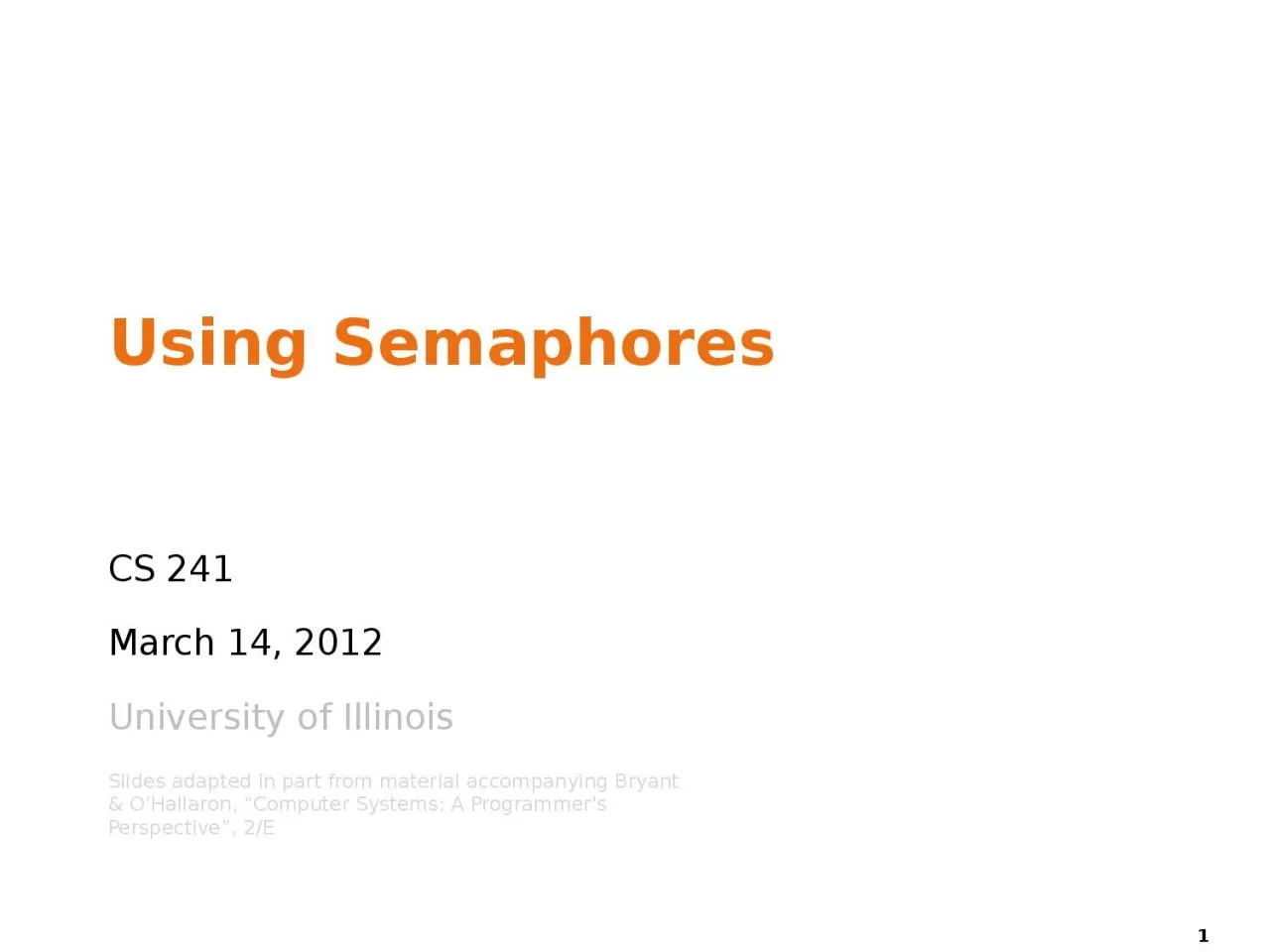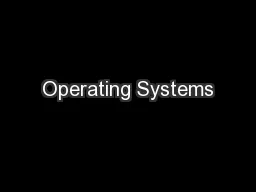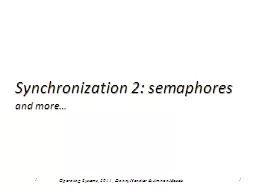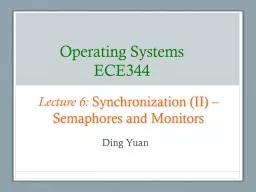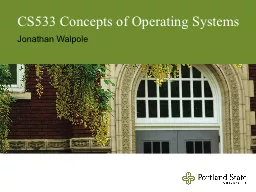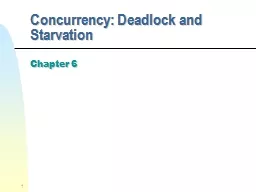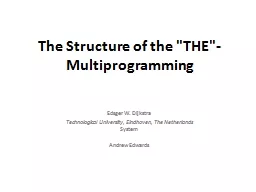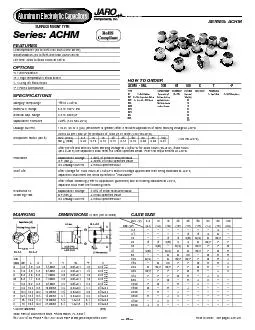PPT-Using Semaphores CS 241 March
Author : hadly | Published Date : 2023-06-23
14 2012 University of Illinois Slides adapted in part from material accompanying Bryant amp OHallaron Computer Systems A Programmers Perspective 2E Announcements
Presentation Embed Code
Download Presentation
Download Presentation The PPT/PDF document "Using Semaphores CS 241 March" is the property of its rightful owner. Permission is granted to download and print the materials on this website for personal, non-commercial use only, and to display it on your personal computer provided you do not modify the materials and that you retain all copyright notices contained in the materials. By downloading content from our website, you accept the terms of this agreement.
Using Semaphores CS 241 March: Transcript
Download Rules Of Document
"Using Semaphores CS 241 March"The content belongs to its owner. You may download and print it for personal use, without modification, and keep all copyright notices. By downloading, you agree to these terms.
Related Documents

